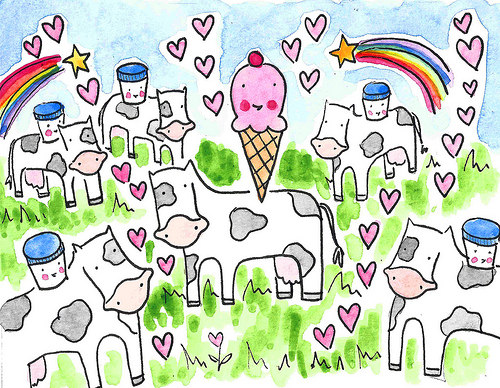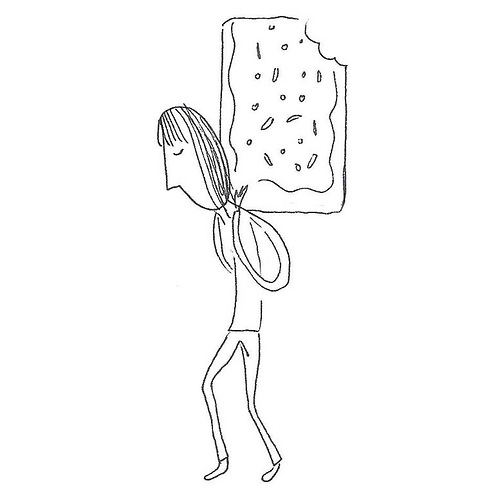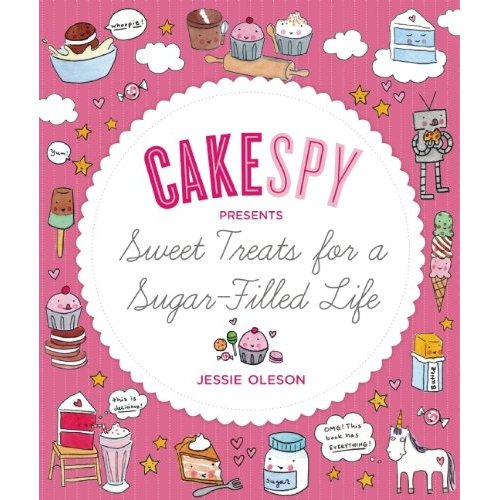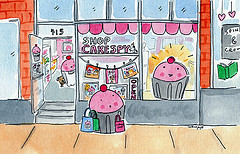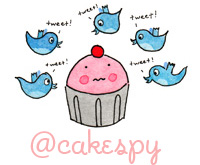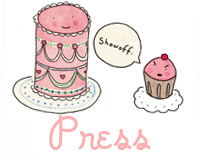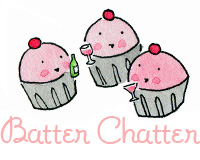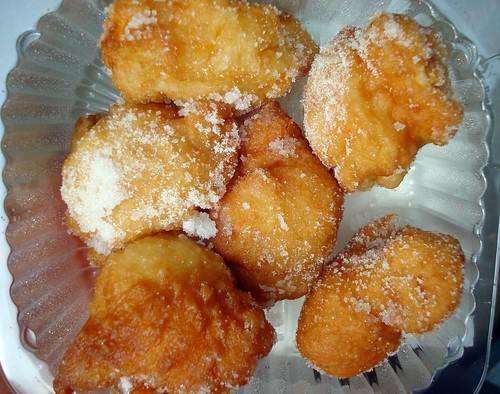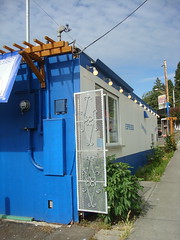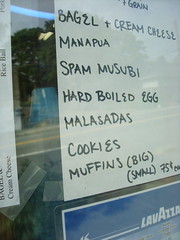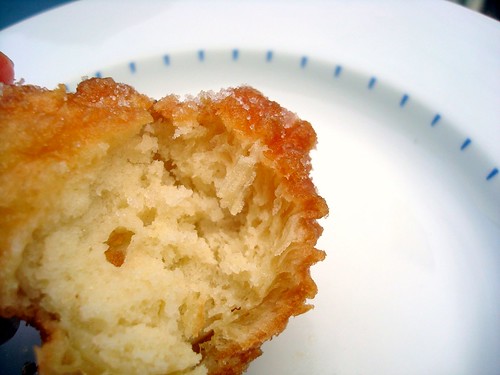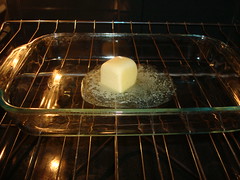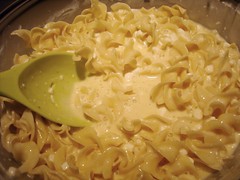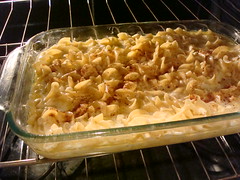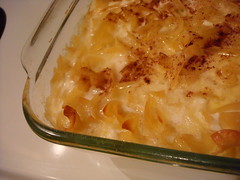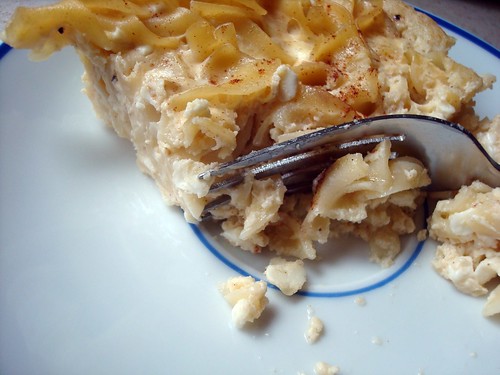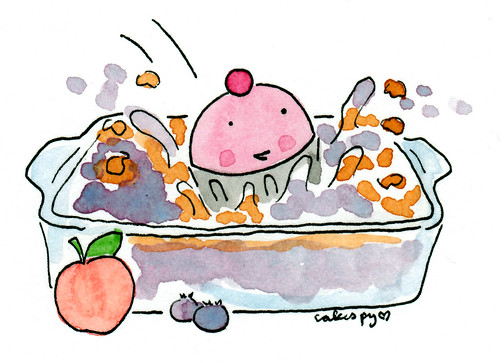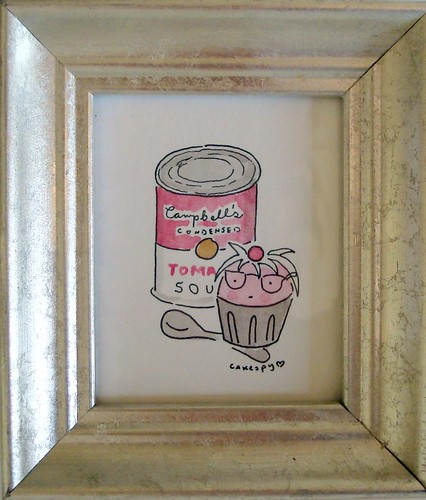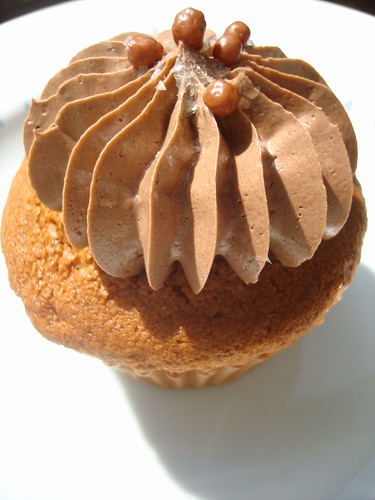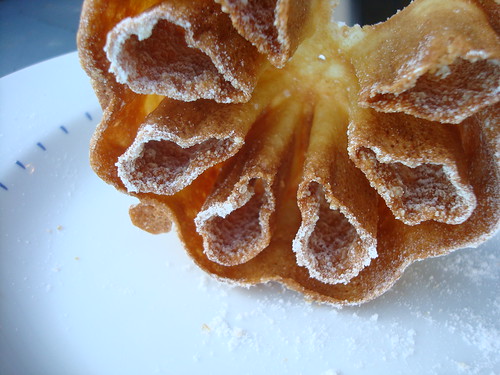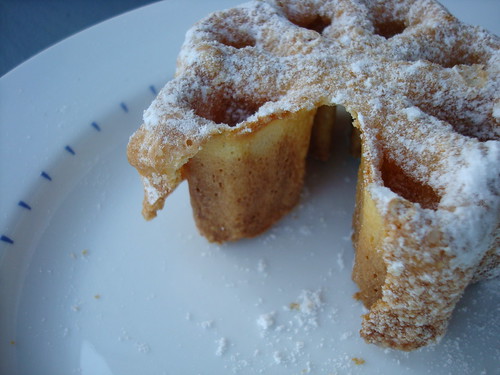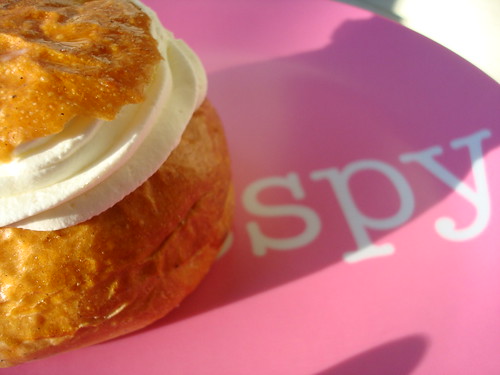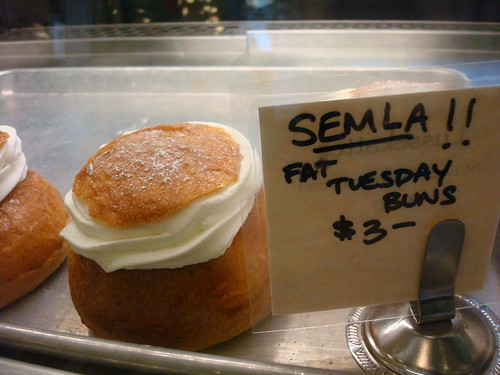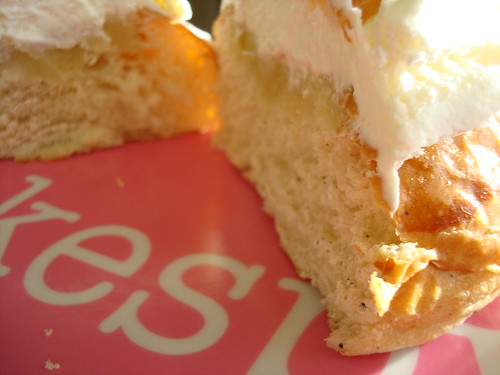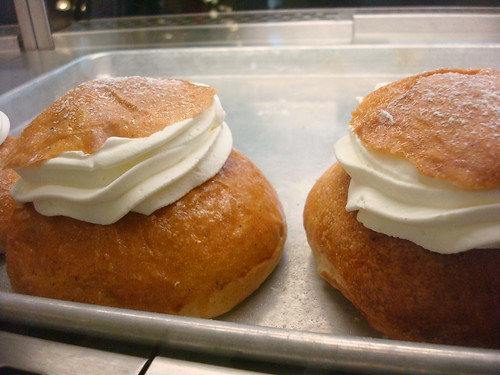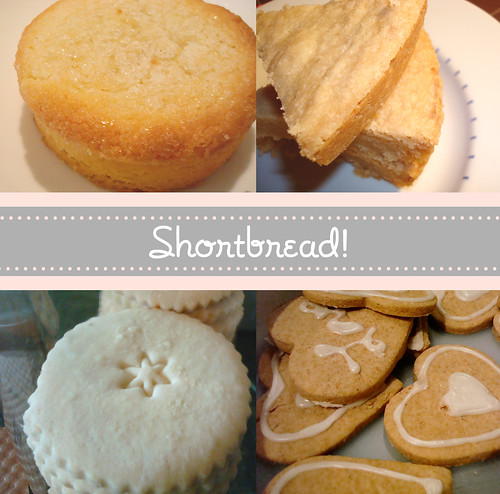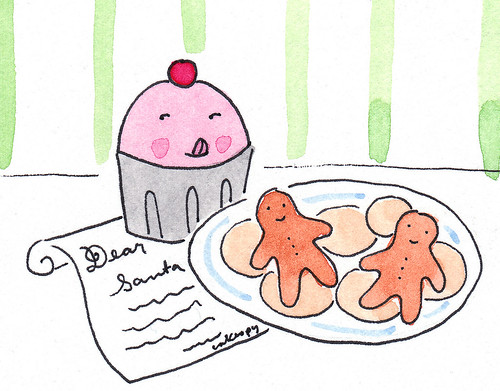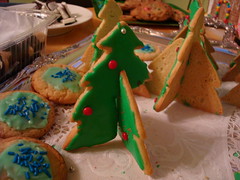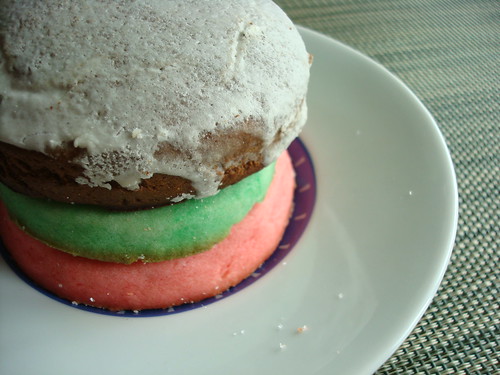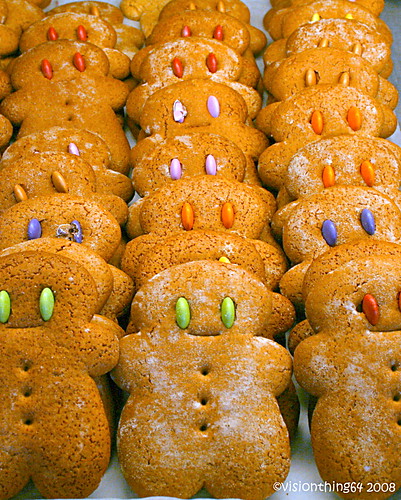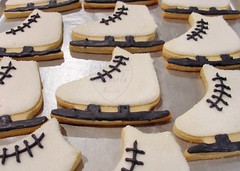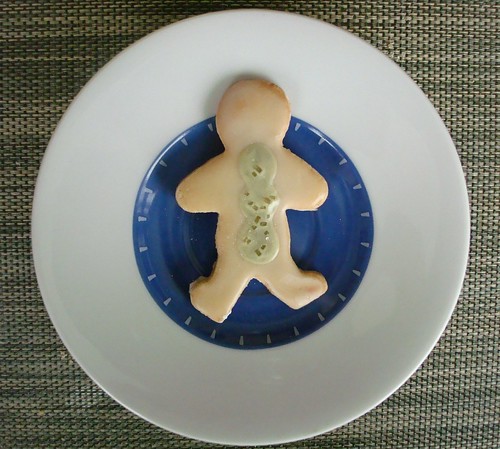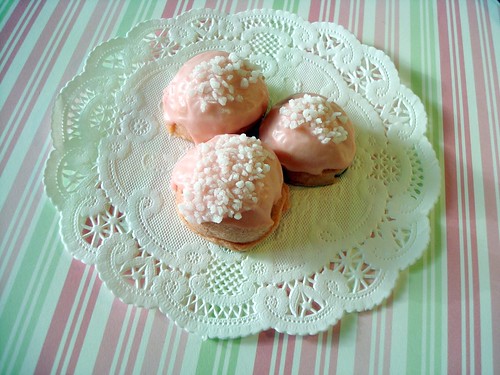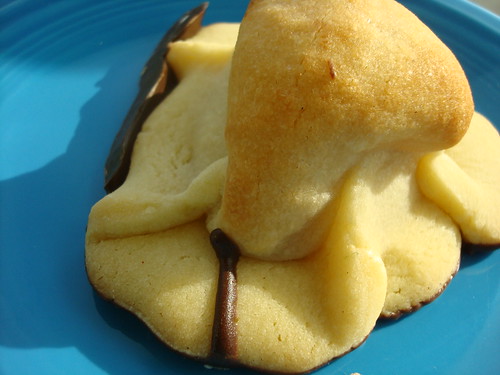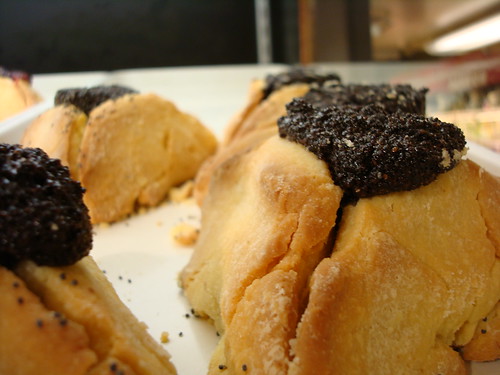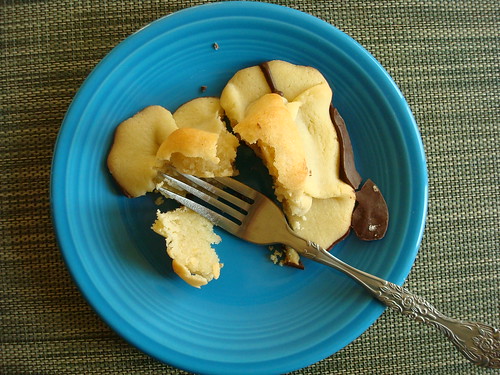Candy Mountain: The Story of the Mountain Bar, An All-Terrain Treat
 Sunday, July 12, 2009
Sunday, July 12, 2009 
Have you ever heard of the mountain bar?
It first hit the CakeSpy radar a few months ago when buddy Allison picked one up at the drugstore as a bit of a consolation because they had run out of Cadbury Creme Eggs. Not that it's a new thing, mind you: the Mountain Bar has actually been around since 1915.

The mountain bar is a thing of beauty. Upon opening it, you may remark that it looks not so much like a mountain as a present left under the sofa by a naughty pet. But there's a delicious secret inside, as shown at the top--this is the cherry mountain, but it is also available in the original chocolate-nut flavor as well as a peanut butter filled variety. These are dense and rich little nuggets--definitely not a subtle or sophisticated food, but they will give you a sweet fix, and fast.
But what is even more compelling than their flavor is their story, as discovered on their site:
The MOUNTAIN® Bar was first put on the market by Brown & Haley in 1915 as the "Mount Tacoma Bar". The bar began with a fondant vanilla center...Sitting before individual warm chocolate pots, the dippers would make a puddle of tempered chocolate mixed with freshly ground peanuts. After rolling the center a little bit more, they would take a scoop of the tempered mix, forcing the center into the scoopful of the mixture. Then, with the heel of the hand, the bottom would be smoothed off and deposited on a waxed card. After the bar was made, it was put in a blue, hand-folded box that had a picture of Mount Tacoma (now Mt. Rainier) on it. Today our state of the art machinery turns out 592 MOUNTAIN® Bars per minute under the strictest sanitary conditions.
By 1923 the name of the bar had changed to just plain "MOUNTAIN®" due to the fact that its sales were beginning to spread into regions beyond Tacoma and the name "Mount Tacoma" conflicted with Seattle's name, Mount Rainier, which was beginning to gain ascendancy.
When World War II arrived, Brown & Haley was making as many as 25 different candy bars. With a shortage of sugar, the company decided to concentrate all of its efforts behind the production and marketing of its leading candy bar, the MOUNTAIN® Bar. This had the effect of establishing the brand as a regional favorite. Shortly after that the company decided to change the name of one of its brands from Cherry Bounce to Cherry MOUNTAIN® Bar in order to capitalize on the brand's strength. In 1974, Brown & Haley introduced the Peanut Butter MOUNTAIN® Bar.
Of course, all of this learning may ultimately lead you to the same question being tossed around Chez CakeSpy: is it possible to make the Mountain Bar even more delicious?
The answer is yes: just add ice cream. For an amazingly rich and decadent treat, why not try the Mountain Milkshake?
Cherry Mountain Milkshake
Serves 2
- 1 Cherry Mountain Bar (or two, if you're feeling particularly decadent)
- 4 generous scoops vanilla ice cream
- 1/4 cup milk (or more, or less, depending on how thick you like it)
Combine ingredients in a blender and blend until smooth. If desired, add more milk for a thinner shake, more ice cream for a thicker shake. Enjoy.
 cake history,
cake history,  candy
candy 








